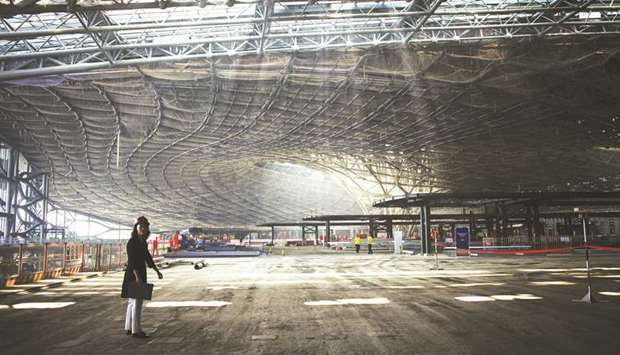Global air passenger numbers are expected to double to 8.2bn over the next 20 years.
Doubling of air passengers over the next two decades means better air transport infrastructure and connectivity and millions of new jobs across the world.
Increasing passenger volumes also mean expanding existing airports and building newer ones with supporting infrastructure.
An industry estimate says that air transport industry could support more than 100mn jobs globally by 2037.
Interestingly, the next two decades will see an increasing shift eastwards in the centre of gravity of the industry.
The axis of the global aviation industry is moving east, as the Asia-Pacific region is set to surpass both North America and Europe in terms of passenger numbers by the end of the next decade, statistics reveal.
The Asia-Pacific region will drive the biggest growth with more than half the total number of new passengers over the next 20 years are seen coming from these markets. During the period, the number of aircraft going into the Asia Pacific region will equal North America and Europe combined.
Such unprecedented growth in demand for flights will increase connectivity between Asian countries and destinations around the world, with obvious benefits for their economies.
Growth in this market may be driven by a combination of continued robust economic growth, improvements in household incomes and favourable population and demographic profiles.
China will displace the United States as the world’s largest aviation market in the mid-2020s, according to the International Air Transport Association (IATA).
The rebalancing of China’s economy towards consumption will support strong passenger demand over the long term.
China’s Civil Aviation Administration is reportedly planning to build an additional 74 airports to make a total of 260 by 2020.
India will take the third place after the US, surpassing the UK around 2024, the global trade body of airlines says.
Indonesia is forecast to be a standout performer — climbing from the world’s 10th largest aviation market in 2017 to the fourth largest by 2030.
Thailand is expected to enter the top 10 markets in 2030, replacing Italy which drops out of the ranking.
Routes to, from and within Asia-Pacific will see an extra 2.35bn annual passengers by 2037, for a total market size of 3.9bn passengers, IATA says.
The Middle East, which is home to some global super connectors, including Qatar Airways, is expected to grow strongly with a CAGR of 4.4% and see extra 290mn passengers by 2037. The total market size will be 501mn passengers.
Airlines in Asia-Pacific already account for over a third of current global passenger numbers and that market share is set to increase, points out the World Economic Forum. The region had almost 280mn international arrivals in 2015.
Obviously, economic growth and rising incomes across the region are fuelling unparalleled growth in business and leisure travel.
But this growth will also induce some challenges into the air transport system, mostly in terms of resources and lack of qualified pilots.
As the aviation industry continues to expand rapidly over the next two decades, growing demand for airline seats will outstrip the supply of qualified pilots, WEF says. The biggest shortage will be in Asia, where airlines have more new planes on order than anywhere else.
To meet demand, aircraft manufacturer Boeing forecasts airlines in Asia will require an additional 261,000 pilots and 317,000 cabin crew by 2037.
Many analysts see this as a positive opportunity for job growth, but insist greater investment in education will be needed to ensure that emerging markets can meet these demands with local staff, instead of relying on international recruitment.
Undoubtedly, the aviation sector is experiencing rapid growth worldwide, propelled by booming tourism industries, lower air fares and the push for greater connectivity in an increasingly globalised economy.
Middle-class expansion has clearly spurred growth in air travel, as more people are now able to afford flights for holidays or business-related travel.
However, the speed at which the industry is growing poses significant challenges, particularly in regard to human resource needs and safety and congestion, leading to reasonable concern that the industry is expanding too rapidly, notes Oxford Business Group. Significant investment will be needed in all areas of aviation to ensure it will be ready to meet long-term demands, OBG says.
While air travel has become more accessible, the rapid expansion in services has resulted in air traffic congestion, delays and concerns about the industry’s impact on the environment. This has prompted new initiatives, including reforms to the regulatory framework for airplane carbon dioxide emissions and design solutions to improve fuel efficiency.
Aviation is key to global economic development and is widely recognised as a major contributor to economic and social development worldwide.
Therefore, significant investment will be needed in the entire spectrum to ensure aviation is ready to meet long-term demands for flights, better connectivity and traveller safety, particularly in the Asia-Pacific region, which is at full throttle now.
* Pratap John is Business Editor at Gulf Times.

A media person stands inside a terminal building under construction at the new international airport in the Daxing district of Beijing in July 2018. China’s Civil Aviation Administration is reportedly planning to build an additional 74 airports to make a total of 260 by 2020.

